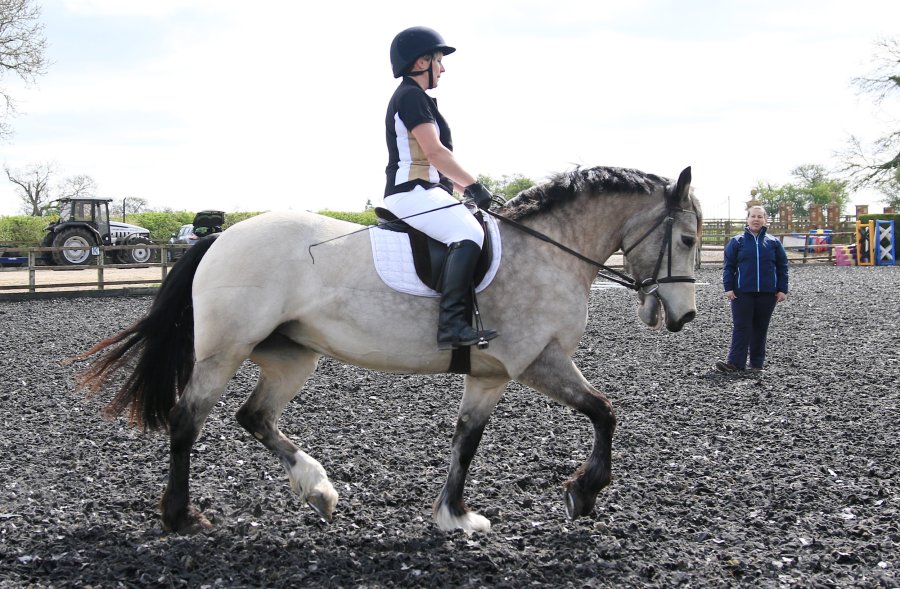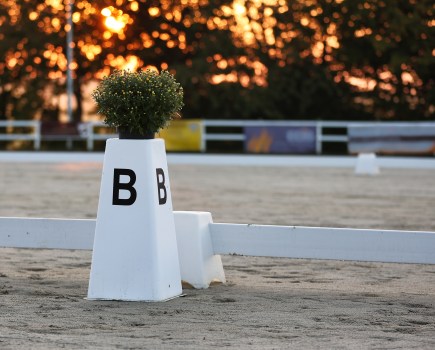In a recent Your Horse giveaway sponsored by Caviera Bedding, lucky winner Hayley Winter won a pallet of Raviera Pro and a lesson with BHS Accredited Professional Coach Alison Kenward.
Hayley, along with her mare Seren, travelled to Alison’s base in Northamptonshire for a one-to-one session.
While the pair compete in M&M showing classes and enjoy hacking, dressage and jumping, Hayley explained to Alison that Seren often tries to evade the contact by crossing her jaw and becoming heavy on Hayley’s right hand.
Here, Alison shows Hayley simple ways to perfect her contact with Seren.
Perfect hand position
It’s important that you’re giving your horse the correct signals from the moment you hop aboard, and as Alison explains, it can be something as simple as checking your hand position.
“Hayley and Seren walked around the school and I was delighted to see that Seren had a confident and active walk,” she says. “After letting Seren settle into a rhythm, I asked the pair to trot and this was where I could see that Seren wasn’t accepting the contact.
“The first thing I wanted to do was for Hayley to make a correction to her hand position to improve the rein contact. Hayley had a habit of turning her hands as though she were playing the piano.”
Seren had encouraged Hayley to adopt this position as she has a tendency to lose her balance and become heavy in the hand in her enthusiasm to rush. Meanwhile Hayley was being pulled forwards further adding to the partnerships balance issues.
Alison’s tips for perfect hand position
Here, Alison suggests asking yourself a series of question when holding the reins to check your hand position is perfect.
- Can you draw an imaginary straight line from your elbow, through your wrist and hands along the reins to your horse’s mouth?
- Are your thumbs on top? Try imagining you are carrying a cup in each hand.
- Are your reins equal length and are your hands level? Have a quick look down at your hands and focus on what it feels like when your hands level.
Remember that your contact needs to be elastic, try to imagine allowing more air into your gloves of you tend to grip the rains tightly as this is a good way to relax your hands without dropping the contact.
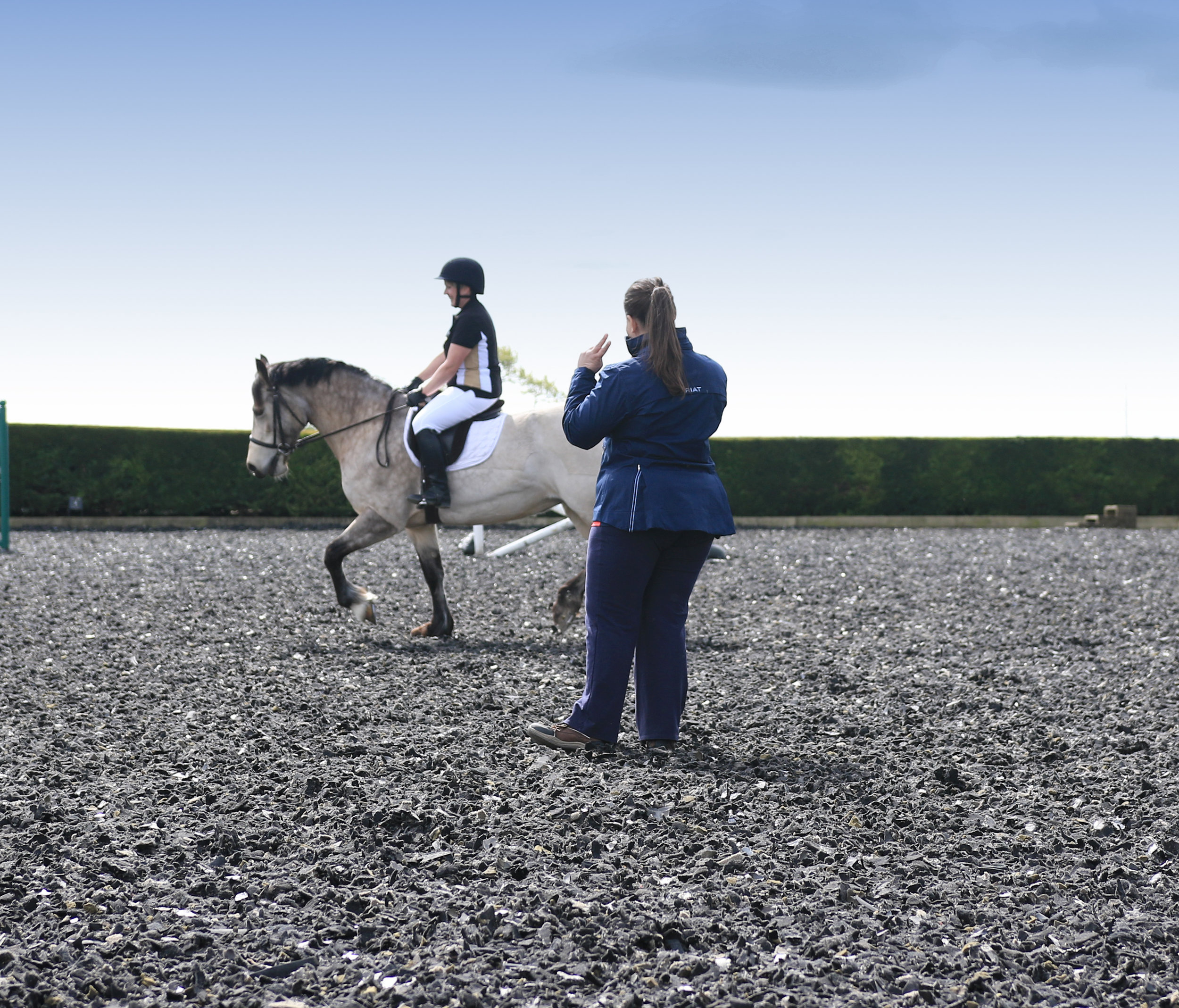 Encourage your horse to seek a contact
Encourage your horse to seek a contact
If your horse evades the contact, it can be useful to take things back to basics.
“Hayley needed to find ways to help Seren seek the contact while accepting Hayley’s rein aids and remaining in balance,” says Alison. “So I asked Hayley to ride on a 15m trot circle as this is a great way to encourage your horse to be more supple and improve his balance.”
Hayley then rode a variety of circles and changes of rein, helping Seren to understand that Hayley’s rein aids were to suggest flexion and for Seren to rebalance herself.
“Seren was soon starting to seek the contact rather than fix her jaw and lean on Hayley’s hands for support,” explains Alison.
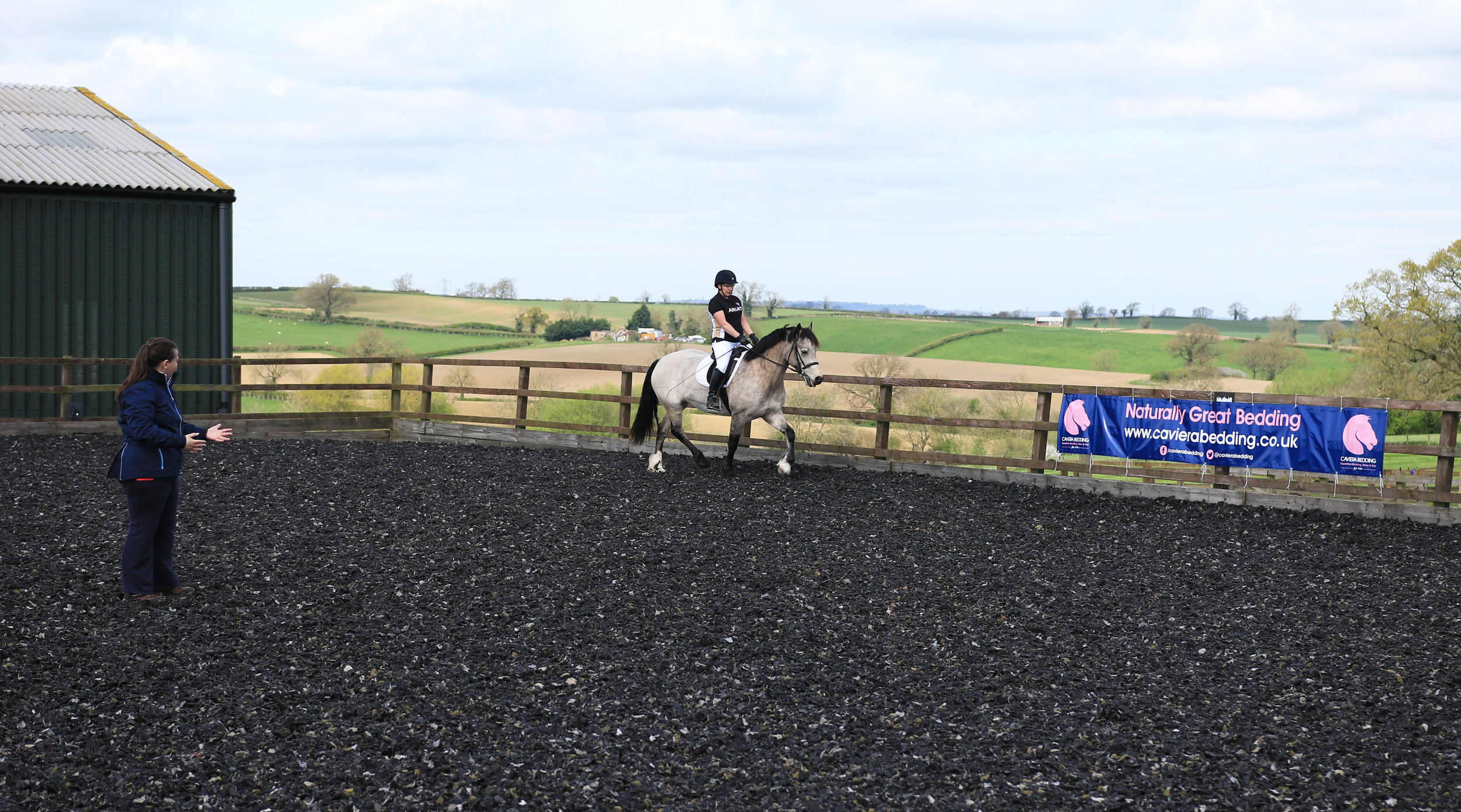
Help your horse to balance
As Alison explains, when you’re learning something new, you shouldn’t be too concerned if things don’t always go to plan.
“This way of going was new for the pair and there will still moments of misunderstanding and loss of balance,” she says. “This is normal and Hayley shouldn’t be afraid of mistakes. It’s better to ride a downwards transition to walk to improve the “conversation” through the rein and then to move forwards into trot again.”
After a walk break, both Hayley and Seren took things up a gear and went for a canter around the school, with Seren setting off around the arena in a show ring gallop!
To reconnect, Hayley cantered Seren on a circle, but her mare became a little unbalanced and heavy in the contact.
“At this point I asked Hayley to return to walk and the discussion moved to the need to help Seren balance in her canter work,” says Alison. “Seren has a tendency to canter quarters in, taking charge of the pace.”
To help improve this, Alison recommends riding shoulder-in, a movement where the horse is asked to bring its shoulders slightly in to help position the horse to the inside.
It’s a gymnastic exercise that helps to improve suppleness and to ride the horse straight as the shoulders are encouraged to come into line with the quarters.
How to ride shoulder-in
- Begin in walk
- Bring your horse’s shoulders slightly to the inside as though you’re about to ride a 10m circle.
- Position your upper body to the inside and ask your horse to bring his shoulders onto an inner track while asking him to keep moving his hind legs forward and straight on the track. Your aim is to have your shoulders parallel with your horse’s shoulders.
- The shoulders are placed by asking for a flexion to the inside and using your outside rein to control the angle. Shoulder-in should be 30° from the track. To begin with ask for less angle, as it’s the quality and consistency that will develop your horse gymnastically.
- Repeat in trot
After practising shoulder-in, ask for canter again, thinking about the shoulder fore position. You’ll find that you’ll be able to achieve a much more balanced canter on both reins.
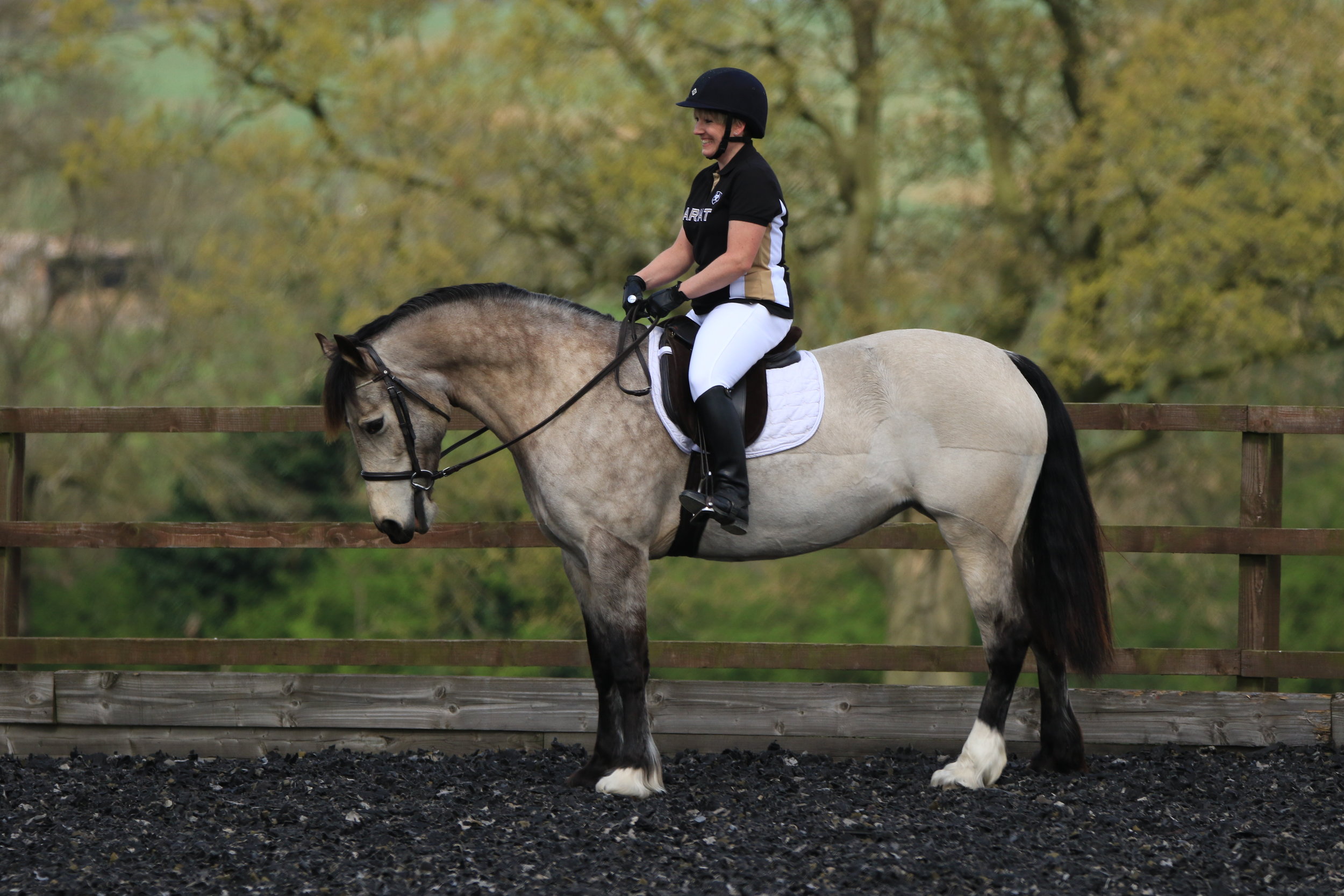 Ride a cool down
Ride a cool down
A cool down is just as important as your warm up and Alison recommends concluding your schooling session with a free walk on a long rein for around 10 to 15 minutes, depending on how hard you’ve worked.
“I’m really pleased with how quickly Hayley was able to adjust and maintain her hand position,” says Alison. “Seren has impressed me with her attitude to work and with time, Seren will improve her balance in trot and canter and begin to work with a more consistent contact.”

